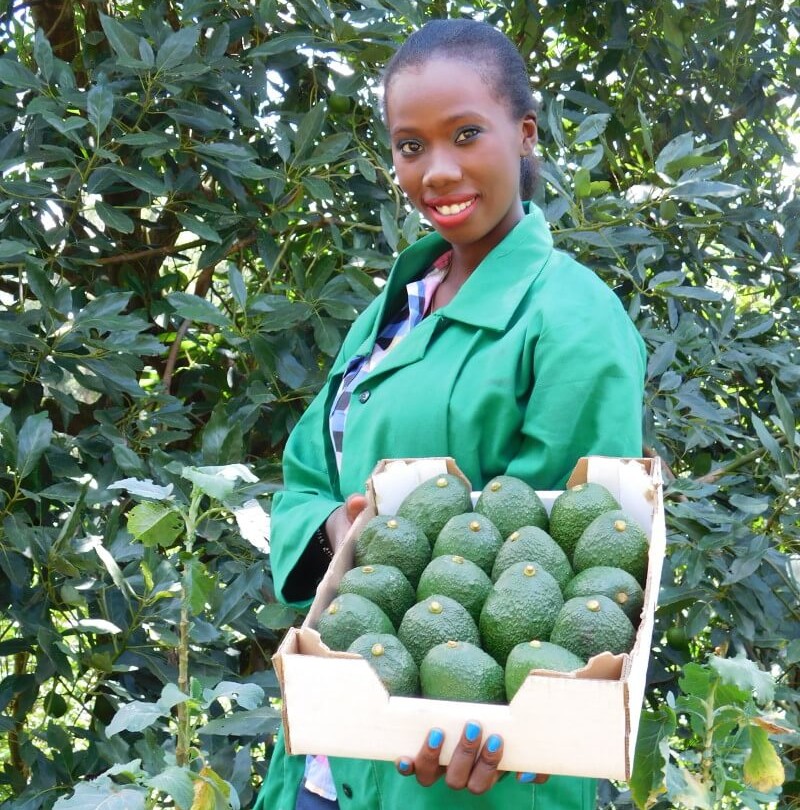Avocado is one of the most demanded crops in both the local and international markets. In this, farmers are now embracing the high value crop as they ditch less profitable crops such as maize and beans.
According to statistics by the International Trade Center, Kenya is the largest exporter of avocados in Africa as of 2017 exporting approximately 51,507 tonnes of the fruit to the international market.
Kenya has over 40 varieties of avocado. Hass is the main export variety and is preferred due to higher fat content than other varieties which gives it a richer taste while Fuerte is preferred for processing.
Hass avocado variety is on demand in the international markets such as UAE, UK, Russia and Spain with more than 70 per cent market share.
Other commercial varieties are Keitt, Reed, Booth 8, Simmonds, Pinkerton, Nabal, Puebla, Tonnage, Ettinger, Hayes, G6 and G7. Varieties used as rootstocks include Puebla, Fuerte, Duke, G6, and G7.
Related content
Special container to save avocado farmer losses resulting from post-harvest mishandling
Government gives Vihiga farmers free avocado, tea and coffee seedlings
Kenyan avocados cleared to enter the expansive Chinese market

The crop does well in areas 1500 to 2100m above sea level such as Nyeri, Murang’a, Kiambu and Kisii.
The crop grows best in deep one meter layer of free draining topsoil with adequate water moisture retention with a pH level of 5.5 to 6.5. In soils with low organic matter, add much and organic manure. Mix the top soil with 20 kilograms (debe) of decomposed farm yard manure (FYM) and 120 grams of double superphosphate (46 per cent P2O5) with the top soil.
At the initial cultivation plough deeply to allow for better and faster root propagation. While preparing, remove perennial weeds such as Kikuyu grass.
The crop is spaced at a range of nine meters by nine meters (120 plants per ha. Prepare holes 60 by 60 by 60cm (length, width and depth) one month before planting.
While planting remove the plant (seedling) from the container with soil still intact and place it in the center of the hole and cover firmly with the mixture of topsoil and farm yard manure.
Transplant during the long rainy season either early in the morning or in the evening at the same depth as it was in the nursery and water the plant immediately after planting.
Make a basin around the seedling for holding water. Transplanting is more successful when carried out during the long rains either early morning or evening. Plant the seedlings at the same depth as it was in the nursery and water the plant immediately after planting. In hot areas, apply shade to the seedlings after transplanting.
Rearing bees in the farm helps improve pollination of avocados hence increasing yields by more than 70 per cent.
Mulch the avocado plants to conserve moisture and add organic matter into the soil. Mulching improves the water retention rate of soil and subsequently promotes avocado growth. The most common mulch for avocado is well-dried grass that is pest free. Dry leaves may also be used as mulch, Avoid use of sawdust as it ties up nitrogen as it decomposes.
Pruning of young plants helps slow growth and lead to a compact tree, in this, prune lower branches that interfere with activities such as irrigation.
Avocados may be intercropped with other crops such as beans, peas, kales or cabbage during the first three to five years to get economic returns from the land before the trees start producing fruits.
An avocado tree yields 230-320 kilograms (7.5-11 t ha–1) of fruit per year. Grafted trees start bearing after three to four years after planting but economical crop is obtainable from the sixth year.
Three to four year-old tree yields 300-400 kilograms fruits per hectare while a tree older than five years yields 800-1000 kilogram fruits (80,000-100,000 fruits per hectare).
The peak period for avocado harvesting in Kenya is between April and September. While harvesting, cut off from the tree leaving a three centimeter stalk.
To kill fungal spores on and in the skin fruit, immerse in water heated to a temperature of 50°C for three to five minutes. Treatment of the fruit using fungicides such as Bavistin (Carbendazim) and Sporta K Brochlura z ensures the treatment is effective.
Pack the avocados in sizes of 10 to 18 pieces with a maximum of four kilograms per box. Ensure the fruits are uniform in size, at most 5 mm stalk attached to the fruit. While sorting and grading, remove injured and diseased fruits, soil, foreign particles and all debris using a water bath. A fungicidal treatment (Thiabendazole) at 300 ml per 100 L of water is used. The fruits are waxed, and dried in hot air. Avocado fruits are stored in cold storage (5°C).